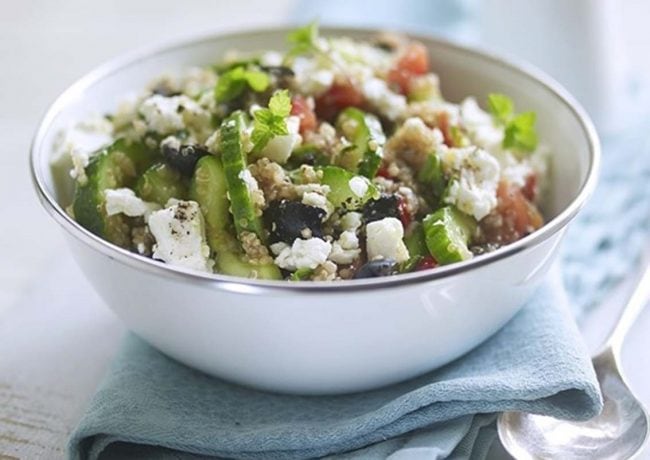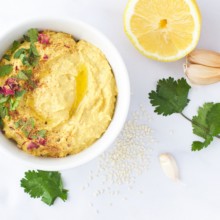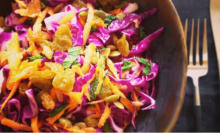
Updated July 20th 2023
Why A Healthy Diet Matters
Unhealthy habits and poor nutrition have become major issues worldwide. However, incorporating extra virgin olive oil into your daily diet can help promote healthier living and reduce the risk of many diseases. According to studies, extra virgin olive oil is the best type of olive oil for its high polyphenol content, which plays an important role in reducing inflammation and protecting against chronic diseases. These benefits have made olive oil a popular ingredient in Mediterranean cuisine, where it is often used as the primary source of fat. By including quality olive oil in your diet, you can enjoy the nutritional benefits of this superfood and make significant strides towards achieving a healthier lifestyle.
Extra Virgin Olive Oil & Greek Quinoa Salad
When it comes to heart-healthy diets, extra virgin olive oil and Greek quinoa salad is a great combination. Extra virgin olive oil is rich in polyphenols, which are antioxidants that have been shown to lower blood pressure and LDL (bad) cholesterol levels. In addition, extra virgin olive oil contains oleic acid, a type of monounsaturated fat that has been linked with a reduced risk of heart disease.
For the best health benefits, choose an extra virgin olive oil like Morocco Gold that has a high polyphenol content. Greek quinoa salad is also a good choice for a heart-healthy diet. Quinoa is a whole grain that is rich in fibre, protein, and vitamins and minerals. Additionally, quinoa has a low glycemic index, which means it won’t cause spikes in blood sugar levels. Together, extra virgin olive oil and Greek quinoa salad make a delicious and nutritious meal that can help promote heart health.
Quinoa is a grain crop that is grown for its edible seeds. It’s pronounced KEEN-wah. It technically isn’t a cereal grain, but a pseudo-cereal. In other words, it is basically a seed, which is prepared and eaten similarly to a grain. If this appeals why not have a look at our Moroccan vegetable couscous.
Ingredients
- 250g of cooked quinoa (or 1 packet of red and white quinoa 250g)
- 70g feta cheese
- Olives in brine
- 200g cherry tomatoes chopped
- 150g cucumber chopped
- 160g red pepper deseeded and chopped
- Small bunch of fresh mint chopped
- 1 Lemon to squeeze
- 2tsp extra virgin olive oil
Instructions
- Microwave quinoa according to the instructions on the packet.
- Add to a bowl along with the chopped tomatoes, cucumber, peppers, olives and mint.
- Crumble over the feta
- Serve with a squeeze of lemon juice and drizzle over the extra virgin olive oil.
- The greek quinoa salad is ready to be eaten. treat yourself by adding a pitta bread.
Quinoa was an important crop for the Inca Empire. They referred to it as the “mother of all grains” and believed it to be sacred. It has been eaten for thousands of years in South America and only recently became a trend food, even reaching superfood status.
Quinoa is now one of the worlds’ most popular health food. You can find quinoa and quinoa products all over the world, especially in health food stores and restaurants that emphasize natural foods.
Quinoa is gluten-free, high in protein and one of the few plant foods that contain sufficient amounts of all nine essential amino acids. It is also high in fibre, magnesium, B vitamins, iron, potassium, calcium, phosphorus, vitamin E and various beneficial antioxidants. There are three main types: white, red and black.
Contains the Plant Compounds Quercetin and Kaempferol
Two flavonoids that have been particularly well studied are quercetin and kaempferol, both found in high amounts in quinoa. In fact, the quercetin content of quinoa is even higher than in typical high-quercetin foods like cranberries. These important molecules have been shown to have anti-inflammatory, anti-viral, anti-cancer and anti-depressant effects in animal studies. By including quinoa in your diet, you will significantly increase your total intake of these (and other) important nutrients
Very High in Fibre, Much Higher Than Most Grains
Another important benefit of quinoa is its high fibre content. One study that looked at 4 varieties of quinoa found a range of 10–16 grams of fibre per every 100 grams. This equals 17–27 grams per cup, which is very high, more than twice as high as most grains. Boiled quinoa contains less fibre, gram for gram because it absorbs so much water.
Gluten-Free and Perfect for People With Gluten Intolerance
According to a 2013 survey, about one-third of people in the US are trying to minimize or avoid gluten. A gluten-free diet can be healthy, as long as it’s based on foods that are naturally gluten-free. Problems arise when people eat gluten-free foods made with refined starches. These foods are no better than their gluten-containing counterparts, as gluten-free junk food is still junk food.
Many researchers have been looking at quinoa as a suitable ingredient in gluten-free diets for people who don’t want to give up staples like bread and pasta. Studies have shown that using quinoa instead of typical gluten-free ingredients like refined tapioca, potato, corn and rice flour can dramatically increase the nutrient and antioxidant value of your diet.
Very High in Protein, With All the Essential Amino Acids
Protein is made of amino acids, nine of which are called essential, as your body cannot produce them and needs to obtain them through your diet. If a food contains all nine essential amino acids, it’s referred to as a complete protein. The problem is that many plant foods are deficient in certain essential amino acids, such as lysine.
However, quinoa is an exception to this, because it contains sufficient amounts of all the essential amino acids. For this reason, it’s an excellent source of protein. It has both more and better protein than most grains.
Has a Low Glycemic Index, Which is Good for Blood Sugar Control
The glycemic index is a measure of how quickly foods raise your blood sugar levels. Eating foods that are high on the glycemic index can stimulate hunger and contribute to obesity. Such foods have also been linked to many of the common, chronic, Western diseases like type 2 diabetes and heart disease. Quinoa has a glycemic index of 53, which is considered low.
High in Important Minerals Like Iron and Magnesium
Many people don’t get enough of certain important nutrients. This is particularly true of some minerals, especially magnesium, potassium, zinc and (for women) iron. Quinoa is very high in all 4 minerals, particularly magnesium, with one cup (185 grams) providing about 30% of the recommended daily intake.
Has Beneficial Effects on Metabolic Health
Two studies, in humans and rats respectively, examined the effects of quinoa on metabolic health. The human-based study found that using quinoa instead of typical gluten-free breads and pastas significantly reduced blood sugar, insulin and triglyceride levels.
Research in rats showed that adding quinoa to a diet high in fructose almost completely inhibited the negative effects of fructose. However, more research is needed to fully understand the effects of quinoa on metabolic health.
Very High in Antioxidants
Quinoa is very high in antioxidants, which are substances that neutralize free radicals and are believed to help fight aging and many diseases. One study, researching antioxidant levels in five cereals, three pseudo-cereals and two legumes found that quinoa had the highest antioxidant content of all ten foods.
Important Disclaimer
The information provided on this website is for general informational purposes only. All content, including text, graphics, images, and information, is presented as an educational resource and is not intended as a substitute for professional medical advice, diagnosis, or treatment.
Please consult with a qualified healthcare provider before making any decisions or taking any action based on the information you find on this Website. Do not disregard, avoid, or delay obtaining medical or health-related advice from your healthcare provider because of something you have read on this Website.
If you think you may have a medical emergency, call your doctor, go to the nearest emergency department, or call emergency services immediately. We are not responsible for any adverse effects resulting from your use of or reliance on any information or content on this Website.
By using this Website, you acknowledge and agree to this disclaimer in full.



